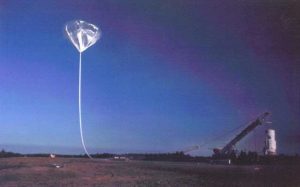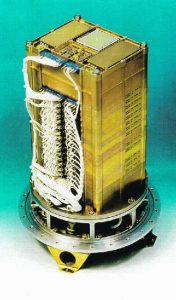
The PAMELA experiment represents one of the most important steps of an extensive space program dedicated to antimatter detection in space, research of dark matter signals, study of the nuclear and isotopic components of cosmic rays, monitoring of the solar activity, measurement of the radiation environment around the Earth.

Many balloon-borne experiments have been performed by the WiZard collaboration including USA, Italian, German and Swedish researchers, gathered since 1988 around Prof. Robert Golden who first discovered antiprotons in space.
The experiments
MASS 89, MASS 91, TS93, CAPRICE 94 and
CAPRICE 98, utilizing typical detectors of elementary particle physics, have provided important results on the antiparticle-particle ratio and on the energy spectra from 1 GeV to 50 GeV for antiprotons, and from 500 MeV to 20 GeV for positrons. Also relevant have been the measurements of primary proton and helium spectra, and those of positive and negative muon fluxes at different atmospheric depths, important for solving the atmospheric neutrino puzzle.

PAMELA is a part of the Russian-Italian Mission (RIM) research program defined in 1993. In the framework of this agreement, two satellite missions,
NINA-1 and
NINA-2, have been performed to study low energy solar and galactic cosmic rays. The two instruments were constituted of 32 planes of silicon sensor.
NINA-1 flew as a “piggy back” of the Resurs-01 n.4 Russian satellite in the years 1998-1999, while
NINA-2 was launched in orbit in July 2000 on board of the Italian satellite
MITA and in operation during the years 2000-2001.
 The PAMELA experiment represents one of the most important steps of an extensive space program dedicated to antimatter detection in space, research of dark matter signals, study of the nuclear and isotopic components of cosmic rays, monitoring of the solar activity, measurement of the radiation environment around the Earth.
The PAMELA experiment represents one of the most important steps of an extensive space program dedicated to antimatter detection in space, research of dark matter signals, study of the nuclear and isotopic components of cosmic rays, monitoring of the solar activity, measurement of the radiation environment around the Earth.
 Many balloon-borne experiments have been performed by the WiZard collaboration including USA, Italian, German and Swedish researchers, gathered since 1988 around Prof. Robert Golden who first discovered antiprotons in space.
The experiments MASS 89, MASS 91, TS93, CAPRICE 94 and CAPRICE 98, utilizing typical detectors of elementary particle physics, have provided important results on the antiparticle-particle ratio and on the energy spectra from 1 GeV to 50 GeV for antiprotons, and from 500 MeV to 20 GeV for positrons. Also relevant have been the measurements of primary proton and helium spectra, and those of positive and negative muon fluxes at different atmospheric depths, important for solving the atmospheric neutrino puzzle.
Many balloon-borne experiments have been performed by the WiZard collaboration including USA, Italian, German and Swedish researchers, gathered since 1988 around Prof. Robert Golden who first discovered antiprotons in space.
The experiments MASS 89, MASS 91, TS93, CAPRICE 94 and CAPRICE 98, utilizing typical detectors of elementary particle physics, have provided important results on the antiparticle-particle ratio and on the energy spectra from 1 GeV to 50 GeV for antiprotons, and from 500 MeV to 20 GeV for positrons. Also relevant have been the measurements of primary proton and helium spectra, and those of positive and negative muon fluxes at different atmospheric depths, important for solving the atmospheric neutrino puzzle.
 PAMELA is a part of the Russian-Italian Mission (RIM) research program defined in 1993. In the framework of this agreement, two satellite missions, NINA-1 and NINA-2, have been performed to study low energy solar and galactic cosmic rays. The two instruments were constituted of 32 planes of silicon sensor. NINA-1 flew as a “piggy back” of the Resurs-01 n.4 Russian satellite in the years 1998-1999, while NINA-2 was launched in orbit in July 2000 on board of the Italian satellite MITA and in operation during the years 2000-2001.
PAMELA is a part of the Russian-Italian Mission (RIM) research program defined in 1993. In the framework of this agreement, two satellite missions, NINA-1 and NINA-2, have been performed to study low energy solar and galactic cosmic rays. The two instruments were constituted of 32 planes of silicon sensor. NINA-1 flew as a “piggy back” of the Resurs-01 n.4 Russian satellite in the years 1998-1999, while NINA-2 was launched in orbit in July 2000 on board of the Italian satellite MITA and in operation during the years 2000-2001.
